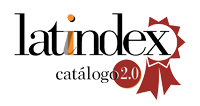Greenwashing in graphic communication advertisement of residential condominiuns in Caruaru-Pernambuco
DOI:
https://doi.org/10.5380/atoz.v2i2.41326Keywords:
Condominium, Sustainability, Advertisement, . GreenwashingAbstract
Introduction: The term greenwashing is used to name a communication mode developed by entrepreneurs to try to mask the truths that permeate their products and services, which may denote a weak environmental commitment. The study aimed the analysis of graphical and textual attributes featured on advertising material related to residential communities in the municipality of Caruaru, Pernambuco which claimed to be “sustainable”. The analysis has focused to understand in what extent greenwashing practices could be identified in this market segment. Method: It was conducted a field survey between January and March 2012 in points of sales of those real estate projects, as well as through the advertising campaigns. Additional information was acquired by informal conversations with brokers and other people responsible for marketing actions; Promotion materials such as web sites, folders, catalogs, outdoors and trade stand were examined as well. Results: All projects examined had some degree of greenwashing in the context established on the document named the "six sins of greenwashing” and the Article 36 of the CONAR concerning the infringement of authenticity advertising in print media. Conclusion: The exponential growth of Caruaru ventures attracted several entrepreneur sectors. However, it urges to rethink a city to be shaped to new perspectives and concepts of life, developing real actions focused on a transparent and sustainable development complying with all the stakeholders.
References
BELLEN, H. M. Indicadores de sustentabilidade. Rio de janeiro: FGV, 2006.
BEZERRA, J. Crescimento do setor imobiliário da cidade de Caruaru-PE. Associação Comercial e Empresarial de Caruaru-PE [2012?]. Disponível em: http://acic-caruaru.com.br/conheca-caruaru/. Acesso em: 15 de abr. 2012.
CALOMARDE, J.V. Marketing ecológico. Madrid: Ediciones Piramide: ESIC, 2000.
CARUARU. O diário de Pernambuco, Recife, 17 abr. 2011. Caderno de Economia. Disponível em: http://www.old.diariodepernambuco.com.br/assinantes/acesso_dp.asp. Acesso em: 20 abr. 2012.
CONSELHO NACIONAL DE AUTORREGULAMENTAÇÃO PUBLICITÁRIA. Disponível em: http://www.conar.org.br/. Acesso em: 22 abr. 2012.
CONSTRUÇÃO civil impulsiona a economia. Jornal Diário da Manhã, Goiânia, 6 dez. 2011. Disponível em: http://www.cbic.org.br/sala-de-imprensa/noticia/construcao-civil-impulsiona-economia. Acesso em 15 de abr. 2012.
CORRÊA, L.R. Sustentabilidade na construção civil. Monografia (Curso de Especialização em Construção Civil) - Escola de Engenharia, Universidade Federal de Minas Gerais, 2009.
DOUGHERTY, B. Design gráfico sustentável. São Paulo: Rosari, 2011.
ESPECIAL cidades: As campeãs de riqueza e bem estar. Veja, São Paulo, edição 2241, ano 44, n. 44, p. 146-181, 2 nov. de 2011.
FACHIN, O. Fundamentos de Metodologia. São Paulo: Saraiva, 2006.
FUNDAÇÃO GETÚLIO VARGAS. Comissão mundial sobre meio ambiente: nosso futuro comum. Assembléia Geral da ONU, Rio de Janeiro, 1987.
FUNDAÇÃO VANZOLINI. Alta qualidade ambiental em seu empreendimento. Disponível em: http://www.vanzolini.org.br/hotsite-104.asp?cod_site=104. Acesso em: 25 abr. 2012.
FUNVERDE. O que significa greenwashing. 15 de jun. 2010. Disponível em: http://www.funverde.org.br/blog/archives/tag/greenwashing. Acesso em: 23 out. 2012.
GREER, J.; BRUNO, K. Greenwash: the reality begin corporate environmentalism, third world network. Penang: Malaysia, 1996.
INSTITUTO AKATU. Responsabilidade social das empresas: percepção do consumidor brasileiro - pesquisa 2006-2007. Disponível em: http://www.akatu.org.br/Content/Akatu/Arquivos/file/Publicacoes/18-Sum_Pesq_2006_2007.pdf. Acesso em: 22 out.. 2013.
KAZAZIAN, T. Haverá a idade das coisas leves: design e desenvolvimento sustentável. São Paulo: Senac, 2005.
LINS, L. dos S.; SILVA, R.N.S. Responsabilidade Sócio-Ambiental ou Greenwash: uma avaliação com base nos relatórios de sustentabilidade ambiental. Sociedade, Contabilidade e Gestão, v. 4, n. 1, p. 91-105, jan./jun. 2009. Disponível em: http://www.atena.org.br/revista/ojs-2.2.3-08/index.php/ufrj/article/viewFile/472/461. Acesso em: 22 out. 2013.
MANZINI, E.; VEZZOLI, C. O Desenvolvimento de produtos sustentáveis: os requisitos ambientais dos produtos industriais. São Paulo: USP, 2008.
MOUTINHO, L.M.G.; NASCIMENTO, J. A. N.; SILVA, A.F. Turismo de evento no interior do Estado: aglomerado produtivo no Agreste de Pernambuco - Brasil - o São João da capital do forró. IN: CONGRESSO SOBER: SOCIEDADE BRASILEIRA DE ECONOMIA ADMINISTRAÇÃO E SOCIOLOGIA RURAL, 48., 2010. [Anais eletrônicos...]. Campo Grande, 2010. Disponível em: http://www.sober.org.br/palestra/15/614.pdf. Acesso em: 15 nov. 2013.
SPITZCOVSKY, D. Certificação LEED: tudo sobre o principal selo de construção sustentável do Brasil. Planeta Sustentável. 31 jan. 2012. Disponível em: http://planetasustentavel.abril.com.br/noticia/desenvolvimento/certificacao-leed-o-que-e-como-funciona-o-que-representa-construcao-sustentavel-675353.shtml. Acesso em 15 nov. 2013.
TERRACHOICE. The sins of greenwashing: home and family edition. Underwriters Laboratory. 2010. Disponível em: http://sinsofgreenwashing.org/index35c6.pdf. Acesso em: 22 out. 2013.
VEIGA, J.E. Desenvolvimento Sustentável: o desafio do século XXI. Rio de Janeiro: Garamond, 2010.
VOLTOLINI, R. Resolução do CONAR a respeito de propaganda verde. Conversa Sustentável, 26 jun. 2011. (Entrevista em vídeo). Disponível em: http://conversasustentavel.blogspot.com.br/%202011/06/ricardo-voltolini-fala-sobre-resolucao.html. Acesso em: 13 set. 2012.
How to Cite
Issue
Section
License
Atoz is a open access journal and the authors have permission and are encouraged to deposit their papers in personal web pages, institutional repositories or portals before (pre-print) or after (post-print) the publication at AtoZ. It is just asked, when and where possible, the mention, as a bibliographic reference (including the atributted URL), to the AtoZ Journal.
The authors license the AtoZ for the solely purpose of disseminate the published work (peer reviewed version/post-print) in aggregation, curation and indexing systems.
The AtoZ is a Diadorim/IBICT green academic journal.
All the journal content (including instructions, editorial policies and templates) - except where otherwise indicated - is under a Creative Commons Attribution 4.0 International, since October 2020.
When published by this journal, articles are free to share (copy and redistribute the material in any support or format for any purpose, even commercial) and adapt (remix, transform, and create from the material for any purpose , even if commercial). You must give appropriate credit , provide a link to the license, and indicate if changes were made
AtoZ does not apply any charges regarding manuscripts submission/processing and papers publication.

















